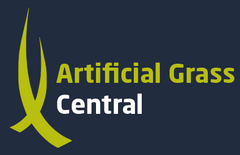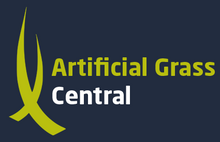Understanding Artificial Grass fibres
Artificial grass can be confusing especially, when looking at fibres and which is best for you and your garden. There are C-shaped, U-shaped, diamond and so many others. What do they all mean? What is different about each one?
You may be wondering while hunting for your perfect grass. Well, you are in luck here at Artificial Grass Central. We have put together a detailed guide to artificial grass fibres. In the hopes of making them less confusing and helping with your decision-making.
Artificial Grass Yarn - What is Fibrillated vs Monofilament?
Fibrillated is the more traditional way of creating yarn, albeit outdated. It means that the plastic is pressed into strands. The small notches are made within the strands. When put together, it creates a honeycomb structure when pulled apart. It does work, but it ends up being less durable. As the notches split, it can lead to thinner fibres which are not ideal for extended use. This yarn also will not look as natural as monofilament.
Enter Monofilament. This yarn is created by pressing the plastic into long strands. It is then coiled and combined to create little bundles that end up as the grass pile (the little blades of grass). Monofilament has a more natural look to it and leads to the grass being easier to work with.
What are artificial grass fibres?
Yarn is the strands that are used like threads, these are stitched together to create the fibres. You can also able get yarns made out of PP, PE, or Nylon and threaded together in one of the above two ways. The fibres are the individual strands you see these are equivalent to blades of grass. These can be shaped, to give different looks, durability and qualities to the turf.
Flat or Rectangle Fibres:
True to their name, flat fibres retain their original shape, appearing unaltered and smooth. The OG artificial grass fibre! This was the first in the progression of artificial grass in monofilament yarn. Where fibrillated yarn was a clumpy, flat fibre, monofilament yarn creates a cleaner blade. Giving a texture similar to natural grass. These fibres are best suited for enhanced aesthetics.
Grass example: Soft 35mm

Diamond Shaped Fibres (also known as Reinforced 3D Grass Fibres):
As the name implies, these fibres are arranged in a diamond shape. Impressively sturdier than flat fibres, they retain a velvety tactile quality and mimic the appearance of genuine grass blades. The diamond configuration marks a significant advancement in grass fibre technology by diffusing light in various directions, minimizing the glossiness typical of flat and stem fibres. Ideal for cultivating natural-looking gardens or spaces with modest foot traffic, this fibre type has been praised for introducing a multidirectional aspect to the grass's visual appeal. Although a combination of various fibres often achieves this effect more effectively.
Grass example: Deluxe 40mm
Propeller Shaped Fibres
Propeller fibres. While not widely known, they find their primary utility in specialized applications such as putting and tee grass. They serve the purpose of crafting either a lush, compact pile suitable for tees or a firm, velvety surface akin to a putting green. In addition to their role in golfing infrastructure, these fibres confer remarkable durability to the grass varieties that incorporate them.
This exceptional resilience makes them particularly well-suited for usage in environments such as gyms, where they can be employed for sledge tracks in gyms. Only when obtained with a shorter pile length.
Grass example: Tee 40mm
Waffle Shaped fibres
A rarer form of fibre, the waffle fibre, finds its primary application on premium-grade lawns, such as our Natural 42mm turf (alongside other variations). Constructed by compressing numerous delicate strands into a single robust grass fibre, this type of fibre presents an unparalleled appearance. Notably, the fibre boasts multiple spines running along its length, enhancing its texture and contributing to an authentic aesthetic for the lawn.
C-Shaped Fibres
The C-shaped fibre is by far one of our most popular and favourite. Its curved structure makes it reflect light better. Giving it a more realistic look. In addition, the C shape makes the grass even more durable and can stand up to heavy traffic. The only downfall with a c-shaped fibre is it isn't the softest compared to the likes of a diamond or flat fibre.
Here are some of our C-shaped fibre grasses. Pet and play grass, being more sturdy the grass is perfect for the pet, play and any type of high-traffic area.

S & U Shaped Fibres
The S-shaped fibre is a quality soft fibre similar to flat or diamond. However, s shape shares some similarities with the c-shaped fibre. This means that a grade with an s-shaped fibre possesses both a good level of softness and durability. It is the best of both worlds. The unevenness of the s-shape means that the sunlight gets scattered helping reduce the glossiness that comes with other fibres such as flat fibres. This will drastically reduce how much heat this grass will retain making it better for hot weather (not that we ever get that in the UK).
Note that the grass will not be as soft as flat or as durable as a c-shaped fibre. If soft grass is what you want, a flat or diamond fibre is probably best for you. Alternative for extra durability a c shape may be better. For that, while writing this post, we do not stock s-shaped fibre grasses.
Similar to a c-shaped fibre, a U-shaped fibre is built for durability over comfort. Having a deeper curve the having grass with this shape will give it greater levels of durability. With its spring back technology, it will surely stand the test of time.
However, we have chosen to keep the c shape only for now as we believe it is far superior for its more realistic look and being just as if not more durable.
V & W Shaped Fibres
A V-shaped fibre will have an extremely high tolerance to wear such as a c or u shape, helping it stay upright for longer. The v shape gives this fibre a spring back technology meaning over time your grass will still look as fresh as when you lay it (with some maintenance that is).
However, this grass does have a roughness to it. Making it feel especially artificial compared to its c-shaped counterparts. Its extreme durability does make it great to use in schools and playgrounds, just don’t let them slide on it or you'll have their parents after you.
Now the final fibre the w. This fibre has everything but excels in nothing. It is durable, and its shape helps to reduce glossiness along with being softer, than the likes of the v shape. The lack of glossiness means this grass is best a not retaining as much heat as any other grass. This makes it more pleasant underfoot or to lie on, on hot days (of which we get many in the UK).
Which fibre is right for you?
Now you know everything you could ever need to know about artificial grass fibres. First of all, well done for reading the whole post! This question is subjective to everyone's needs. I am sure after reading all of the above content you are pretty informed of what type of fibre is suitable for your personal needs. If you want durability, that still looks good the c-shape is ideal such as on our pet and play grass.
One thing we haven't covered is some grasses will have multiple fibres, which will give it a more natural look. Such as our Natural 42mm grass, but this comes in at a more premium price due to it being harder to manufacture.
If you are still unsure of what fibre is right for you, get in touch and we will do our best to help you choose your perfect grass.

